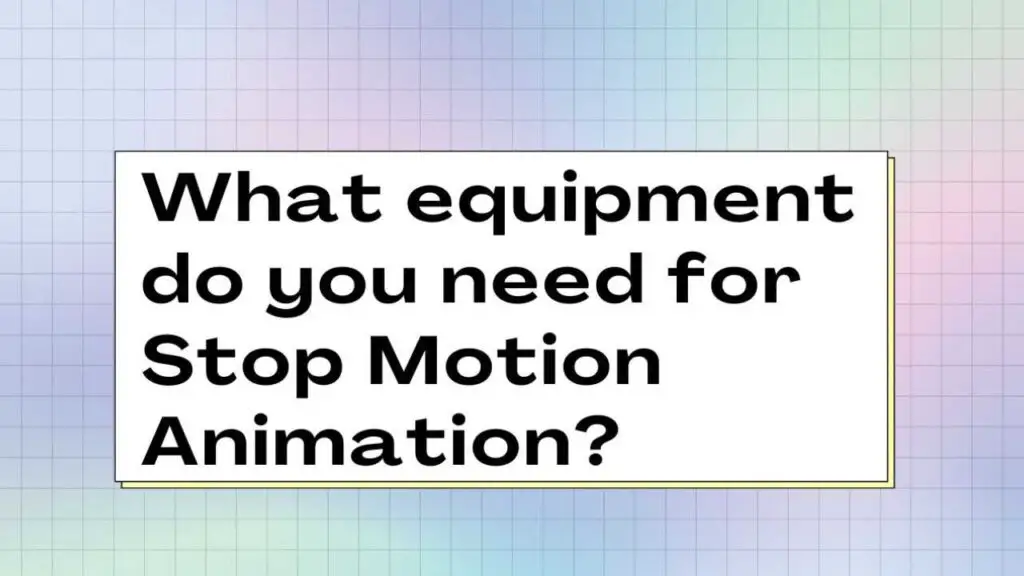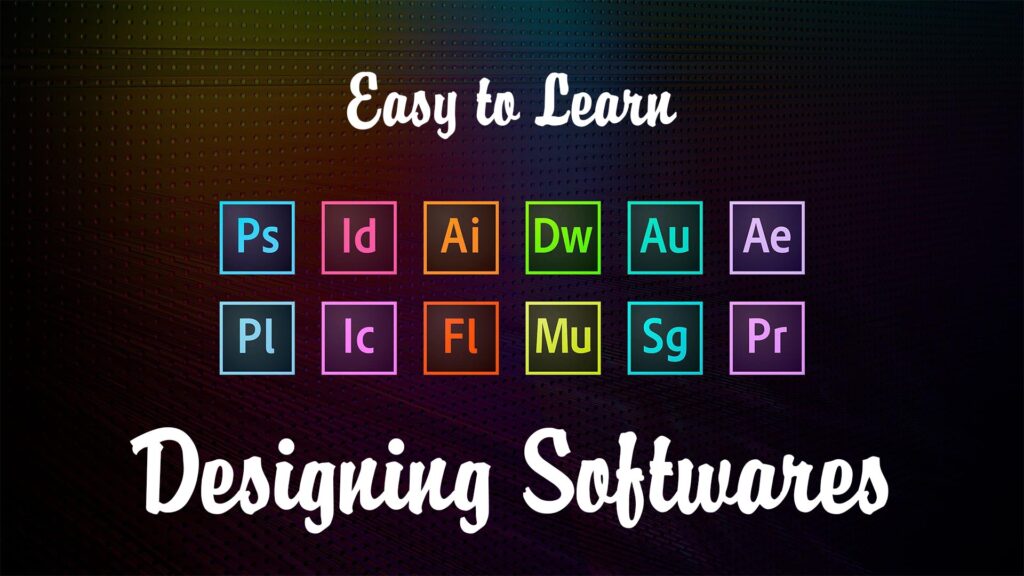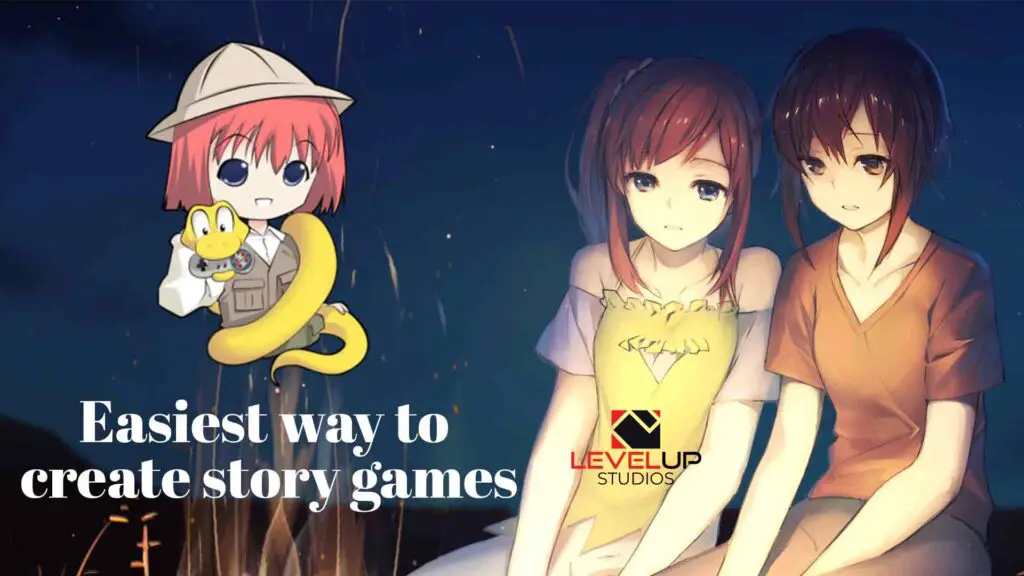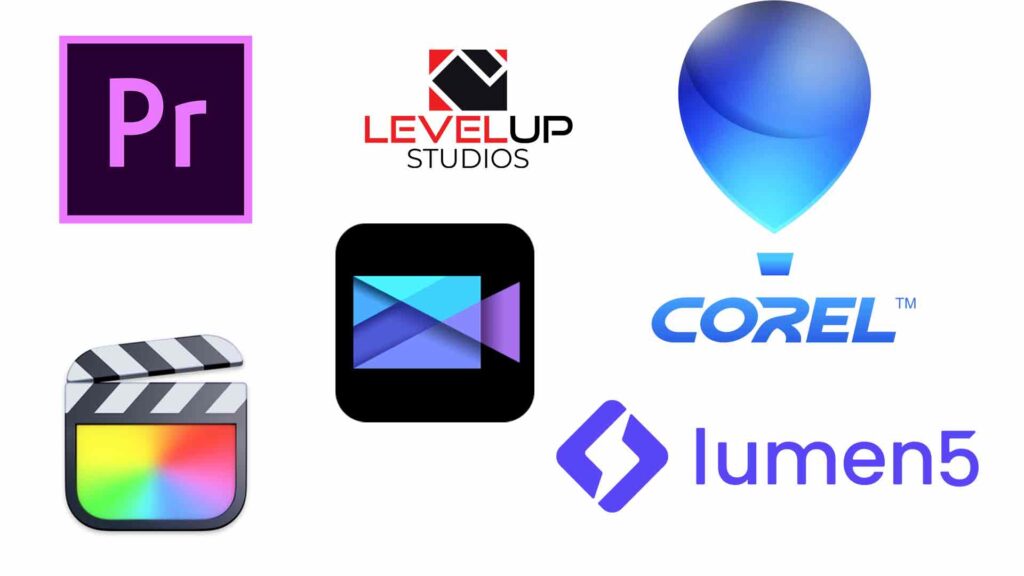THIS ARTICLE MAY CONTAIN AFFILIATE MARKETING LINKS! IN CASE YOU MAKE A PURCHASE THROUGH ONE OF THE LINKS, WE'LL GET A SMALL COMMISSION. WITH NO EXTRA CHARGES TO YOU. THANKS!!
Creating any type of animation requires various types of equipment, skills, and many other things. If you are interested in creating your own animation, and specifically stop motion animation than continue reading, as we explore what is stop motion animation, and what equipment do you need for stop motion animation.
What is Stop Motion Animation?
Stop motion animation is a super cool way of bringing inanimate objects to life in a movie-like fashion. It’s like a grown-up version of playing with action figures, but with a professional twist! Imagine making a toy move, taking a photo, moving it a tiny bit more, taking another photo, and repeating this process over and over. When you play back those photos in rapid succession, it creates the illusion of movement. Voilà, you’ve got yourself a stop motion animation!
To make things move smoothly in stop motion, patience is your best friend. It’s a bit like a painstaking dance where each step, or in this case, each frame, needs to be carefully choreographed. Whether it’s using clay figures (like Wallace and Gromit), household items, or even food (ever seen a dancing banana?), stop motion lets you create all kinds of unique and imaginative stories.
The magic of it all is that it captures the charm of handmade artistry, making it perfect for indie filmmakers and creative souls looking for a unique way to tell their tales.
Types of Stop Motion
Stop motion animation is a wonderfully diverse art form, and there are several different types of stop motion techniques, each with its own unique charm. Let’s dive into a few of them:
- Claymation: This is probably one of the most popular forms of stop motion, where characters and scenes are built from clay and then painstakingly animated. Think of classics like Wallace and Gromit.
- Puppet Animation: In this method, articulated puppets with movable joints are used to create characters. The puppets are moved frame by frame to achieve animation. “The Nightmare Before Christmas” is a famous example.
- Object Animation: This involves animating everyday objects. You can make a spoon appear to bend and stir itself, or a chair walk around the room. It’s a great way to infuse humor and creativity into your animations.
- Cutout Animation: Here, 2D characters or objects are cut out of paper or other materials and then moved incrementally to create animation. It’s a technique seen in many early animated films.
- Silhouette Animation: Silhouettes of figures or objects are used against a light source. These can be intricate and evoke a beautiful sense of mystery. “The Adventures of Prince Achmed” is a classic example.
- Pixilation: This is a fascinating technique where real people are used as stop motion subjects. It involves filming humans frame by frame, often creating surreal and whimsical movements.
- Time-Lapse Animation: Instead of capturing the slow passage of time, time-lapse stop motion condenses long periods into a short video. This is often used to show the growth of plants, construction projects, or other gradual processes.
- Sand Animation: Artists use sand to create temporary images and scenes on a lightbox. The grains of sand are moved and manipulated to tell a story, and it’s often used in live performances.
- Experimental and Mixed Media: Some animators push the boundaries by combining multiple techniques. You might see claymation characters in a real-world setting or puppets in a 2D cutout world.
Each type of stop motion animation has its own unique appeal and artistic possibilities. The choice of technique often depends on the story you want to tell and the visual style you’re aiming for. So, whether you’re into the quirky charm of claymation or the elegance of silhouette animation, there’s a stop motion style that can bring your creative vision to life.
What equipment do you need for Stop Motion Animation?
For stop motion animation, you don’t need a Hollywood studio full of fancy gear. In fact, you can get started with some basic equipment, making it a perfect hobby for creative folks on a budget. Here’s a rundown of what equipment do you need for Stop Motion Animation:
- Camera: Any camera will do, from a smartphone to a DSLR. Just make sure it can be set to manual mode, allowing you to control exposure settings like focus and aperture.
- Tripod: A sturdy tripod is essential to keep your camera perfectly still. You don’t want your shots to wobble.
- Lighting: Good lighting is crucial. Natural light is your best friend, but if that’s not an option, invest in some desk lamps with adjustable brightness.
- Backdrop: A plain background or backdrop is essential to maintain consistency in your shots. You can use colored paper, fabric, or even build your own set.
- Props: Depending on your story, you’ll need props or characters. These can be made from clay, paper, or any other materials you fancy.
- Stop Motion Software: There are various free and paid stop motion animation software options available for your computer or smartphone. These help you capture and edit your frames into a seamless animation.
- Remote Shutter Release: This nifty accessory prevents camera shake when you press the shutter button.
- Patience: This is perhaps the most important “equipment.” Stop motion requires time and patience, as you’ll be taking many photos for just a few seconds of animation.
Once you’ve got these basics, you’re all set to embark on your stop motion adventure. It’s an art form that rewards creativity and resourcefulness, so don’t be afraid to improvise and experiment with different materials and techniques.

- Motion Graphics Vs Animation
- How to make Motion Graphics Video?
- How to Create a Storyboard for Animation
Important Software for Stop Motion Animation
When it comes to creating stop motion animations, having the right software can make a world of difference. Here are some important software options to consider:
- Dragonframe: This is the industry standard for stop motion animation. It provides a comprehensive set of features, including onion skinning, time-lapse recording, and exposure control. Dragonframe is used by many professional animators.
- Stop Motion Studio: If you’re just starting and want something user-friendly, Stop Motion Studio is a great choice. It’s available for both iOS and Android and offers a range of features, from basic to advanced.
- iStopMotion: A popular choice for Mac users, iStopMotion offers a user-friendly interface and is perfect for beginners. It supports live view and various camera types.
- ClayFrames: This Android app is designed specifically for claymation and stop motion animation. It’s great for those who want to create clay animations on their mobile devices.
- Stop Motion Pro: This Windows-based software is ideal for both beginners and professionals. It offers advanced features, including time-lapse and rotoscoping tools.
- Stykz: If you’re looking for a free option, Stykz is a 2D animation software that can be used for creating simple stick figure stop motion animations. It’s not as feature-rich as some paid options but is a good starting point.
- Hue Animation: This software is often bundled with Hue’s animation cameras. It’s beginner-friendly and includes features like onion skinning and audio integration.
- AnimatorDV Simple+: This Windows software is known for its simplicity and ease of use. It’s a good choice for those who want a straightforward stop motion tool.
- FrameByFrame: This is a free, open-source software for Mac users. It’s a basic tool but can be great for those on a tight budget.
- Lego Stop-Motion Movie Creator: If you’re into Lego and want to create Lego-based stop motion animations, this software is tailored for that purpose. It’s easy to use and great for kids and beginners.
The choice of software depends on your experience level, the complexity of your project, and your operating system. It’s a good idea to experiment with a few to see which one best fits your needs and preferences. Regardless of the software you choose, remember that creating stop motion animations requires patience and creativity, and the software is just a tool to help bring your imagination to life.
Accessories recommended for Stop Motion
Accessories can enhance your stop motion animation setup and make the process smoother and more enjoyable. Here are some recommended accessories:
- Remote Shutter Release: This is a must-have accessory. It helps prevent camera shake when you press the shutter button, ensuring your shots are consistent and steady.
- Tripod and Ball Head: A good quality tripod with a ball head allows you to position your camera precisely and lock it into place. This stability is essential for creating smooth animations.
- Camera Mount for Smartphones: If you’re using a smartphone for your animations, consider a smartphone mount for your tripod. It keeps your phone secure and steady.
- Lighting Equipment: Good lighting is crucial for stop motion. Invest in adjustable LED lights or desk lamps to ensure consistent and well-lit scenes.
- Green Screen or Backdrops: Depending on your project, you may need different backdrops. A green screen can help with creating custom backgrounds in post-production, while plain backdrops ensure a clean, consistent look.
- White Balance Card: To maintain color accuracy in your shots, a white balance card can be very helpful. It allows you to set the correct color temperature for your lighting conditions.
- Articulated Arm: An articulated arm or magic arm can be used to precisely position and secure objects in your scenes. It’s particularly useful for complex animations.
- Stop Motion Software: While not a physical accessory, stop motion software is essential. Choose software that suits your needs and is compatible with your camera.
- Storage: Stop motion can generate a large number of image files. Ensure you have sufficient memory cards and external storage options to store your footage.
- Wireless Bluetooth Speaker: Having a speaker can help you sync your animation with sound effects or music. It’s a handy tool for timing your shots to match audio.
- Wireless Remote Control: Some cameras allow you to control settings remotely using a wireless remote. This can be helpful for adjusting exposure and settings without touching the camera.
- Color Gels and Filters: These can add creative lighting effects to your scenes, making them visually interesting. They are particularly useful for adding atmosphere or changing the mood of your animation.
- Sculpting Tools and Materials: If you’re into claymation, having a set of sculpting tools and various colors of clay is essential.
- Storyboard and Scripting Tools: While not strictly physical accessories, having a storyboard or scriptwriting software can help you plan your animations more effectively.
Remember that the specific accessories you need can vary based on your project and your chosen stop motion technique. Start with the basics and gradually add to your setup as you gain more experience and take on more complex animations. Having the right tools can make your stop motion journey all the more enjoyable and productive.
Conclusion
In conclusion, stop motion animation is a captivating and creative art form that allows you to bring inanimate objects to life one frame at a time. With the right equipment and accessories, coupled with your imagination and patience, you can craft unique and enchanting stories through this meticulous yet rewarding process.
From claymation to puppet animation, the world of stop motion offers a plethora of techniques to explore, each with its own distinctive charm. The choice of software and accessories depends on your project’s complexity and your experience level, but remember, it’s your creativity that truly drives the magic of stop motion.
So, whether you’re a beginner starting with a smartphone or a seasoned animator using professional software, the world of stop motion is full of possibilities. Embrace this art form, experiment with different styles, and let your imagination run wild. Through your animations, you can entertain, inspire, and transport your audience to worlds of your creation. It’s a journey filled with challenges and rewards, and it’s an art form that continues to captivate both creators and viewers alike.







